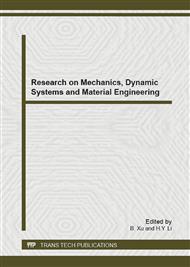p.273
p.277
p.280
p.287
p.291
p.297
p.301
p.304
p.308
The Experimental Study of Diffraction Angle of Aluminum Alloy 3003
Abstract:
The most suitable diffraction angle of aluminum alloy 3003 used for stress measuring is aimed to be determined in this paper. The experiment makes a stress measurement of a loading aluminum alloy 3003 equal strength beam with the traditional electrical measuring method and the X-ray stress measurement. With the electrical measuring method as reference, the research study the measured values that acquired from the X-ray diffraction method when the diffraction angle are 142° and 156°, and then compare them with that acquired from electrical measuring method. The measurement results demonstrate that the diffraction angle at 156 ° is better than at 142 ° based on the assessment standards of the liner slope and the distribution of data. Thus the optimum diffraction angle for X-ray to measure the macroscopic stress of aluminum alloy 3003 is 156 °. In this paper,the stress caused by the load on the equal strength beam is assumed to be "residual stress" and thus the conclusion has reference values for the standardization of residual stress measurement of aluminum alloy by XRD and has theoretical guiding significance in the production practices.
Info:
Periodical:
Pages:
291-296
Citation:
Online since:
December 2012
Authors:
Price:
Сopyright:
© 2013 Trans Tech Publications Ltd. All Rights Reserved
Share:
Citation:


